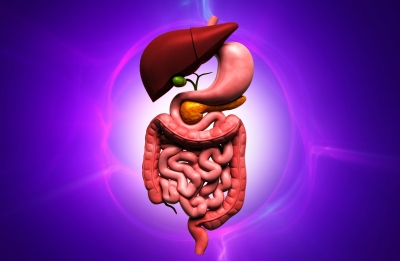LDL-P: How to lower small, dense LDL particles

The development of heart disease is associated with many risk factors. LDL cholesterol level is often used to determine if preventative treatment is needed, such as medication to lower levels in an effort to prevent heart disease.
However, research indicates LDL cholesterol alone is not necessarily a good determinant of risk. LDL particles vary in their content, size, and density. Not all LDL particles impact heart disease risk in the same way.
Light, fluffy versus small, dense LDL particles
LDL particles come in two main sizes: Large, fluffy particles and small, dense particles.
I had these particles explained to me once by picturing dump trucks on a highway. This helped me visualize the role of these different particles. Hopefully it’ll help you…
Picture the large, fluffy particles to be five large trucks transporting a full load on the highway. Now picture small, dense particles to equal twenty small, trucks with a full load on the highway. It takes twenty small trucks to carry the same load five large trucks can transport.
The more “trucks” (ie particles) in your system, the greater your heart disease risk.
Hence the reason it is beneficial to have large, fluffy particles (ie trucks that can carry a lot in fewer loads) versus small, dense particles (ie more trucks to carry the same load).
Continue reading
Warnings to watch for during exercise

Exercise is beneficial for everyone, even those who have heart disease or have had a heart attack. Regular exercise can strengthen your heart and promote quicker recovery.
Safe Exercise for Heart Disease
However, there are warning signs to watch for.
Stop exercise if you become short of breath or overly fatigued. Granted, exercise will cause you to breathe harder and you should feel like you have exerted yourself after a solid workout. Discuss what is acceptable for you with your doctor.
If you deal with shortness of breath regularly, even when not exercising, contact your doctor. You may need to adjust your diet, fluid intake, or medications.
If you develop heart palpitations or an irregular heartbeat, stop exercising, rest for 15 minutes and then take your pulse. If you heart rate remains greater than 120 beats per minutes, contact your doctor.
Don’t ignore pain. Ignoring pain can lead to injury.
When to stop exercising
Continue reading
Substitute Lean Pork for Chicken or Fish to Lower Blood Pressure

The DASH (Dietary Approaches to Stop Hypertension) diet is a plan to lower blood pressure levels. This approach incorporates a diet low in saturated fat and rich in low-fat-dairy, fruits, and vegetable.
The DASH diet includes lean, unprocessed meats in appropriate serving sizes, with two or fewer servings consumed daily. One serving of meat equals three ounces. For a visual, three ounces is about the size of a deck of cards.
A study published in the American Journal of Clinical Nutrition compared the impact of lean, unprocessed pork consumption with chicken and fish as dominant protein sources within this diet plan. Researchers determined lean pork could effectively be incorporated into a DASH-style diet promoting lower blood pressure.
Keep in mind, this only applies to unprocessed lean pork, such as tenderloins or uncured ham with visible fat trimmed. Research does NOT support adding other cuts or types of pork products that are higher in fat and salt to a DASH diet promoting low blood pressure.
Continue reading
Safe Exercise for Heart Disease
 Exercise is beneficial for everyone, even those who have heart disease or have had a heart attack. Regular exercise can strengthen your heart, promote quicker recovery, and reduce dependence on medication.
Exercise is beneficial for everyone, even those who have heart disease or have had a heart attack. Regular exercise can strengthen your heart, promote quicker recovery, and reduce dependence on medication.
Heart benefits of exercise include:
- Lower blood pressure
- Increased HDL cholesterol levels
- Reduced triglycerides
- Decreased LDL cholesterol levels
- Reduced symptoms of heart failure
- Improved circulation
- Stronger heart muscle
- Blood sugar control
- Weight loss
- Reduced angina
However, you do need to be cautious before starting an exercise routine if you have heart disease or have had a heart attack.
Discuss with your doctor first
It’s especially important to discuss exercise with your doctor if you recently had a heart attack, are experiencing chest pain/pressure or shortness of breath, have diabetes, or recently had a heart procedure.
Some questions to ask your doctor include…
Continue reading
7 Steps to Help Prevent a Heart Attack

Heart disease is the leading cause of death worldwide, equaling 17.3 million deaths annually. Approximately 635,000 Americans have their first heart attack each year with 2,150 Americans dying daily from heart disease and stroke. (Source: 2015 Heart Disease and Stroke Statistics Update)
Lowering your risk factors for heart disease will help you prevent a heart attack.
- Make healthy food choices. There are many ways you can adjust your diet to promote heart health. Control portion sizes to avoid excess calories, increase your intake of vitamin and nutrient rich fruits and vegetables, switch from processed grains to whole grains for increased fiber, eliminate trans fats, opt for lean proteins, and reduce sodium intake.
- Monitor your blood pressure. High blood pressure increases the development of atherosclerosis, which is the build-up of arterial plaque. This build-up causes narrow arteries, reducing blood flow to the heart leading to increased risk of an artery becoming fully blocked or blood clot formation. Blood pressure is known as the “silent killer”, meaning you usually don’t know you have high blood pressure. It is important to periodically monitor levels. If your average blood pressure is greater than 140/90 mm Hg, discuss with your doctor.
Can Probiotics Lower Cholesterol Levels?

Understanding gut bacteria and how they impact metabolism, heart disease, diabetes, and obesity may provide new treatment options.
Trillions of bacteria and other microbes live within our gut. This microbiome is necessary to neutralize by-products of digestion, decrease toxins and carcinogens, and inhibit the growth of unhealthy bacteria and yeast. The microbiome also aids in the absorption of nutrients, supports the digestive process, and produces vitamins B and K.
Research published in the journal Circulation Research found the microbiome may also play a role in body mass index (BMI) and blood lipid levels (i.e. HDL and triglycerides).
Continue reading



